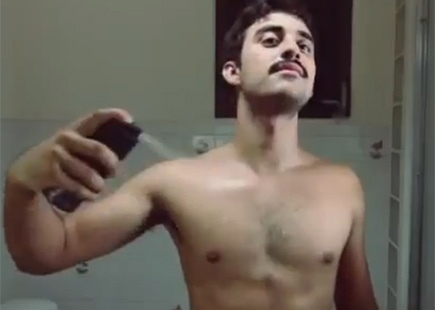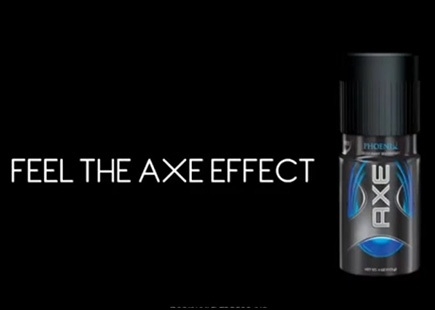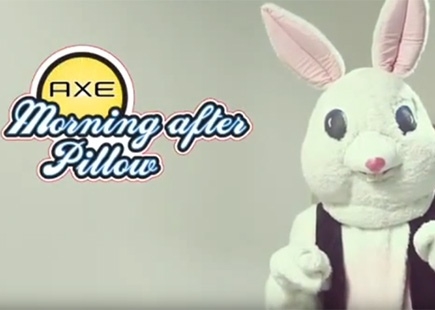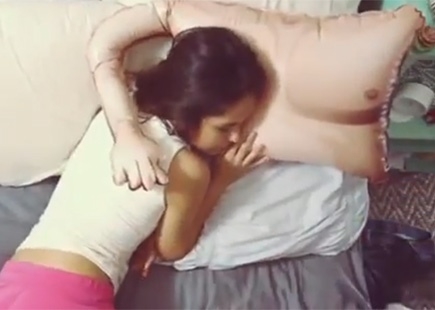Why ‘The Morning After Pillow’ created by Axe (Lynx in the UK) in 2012 would be given the cold shoulder today

The Background
It’s International Women’s Day this week and rather than focus on a new campaign (Jo Chappel already had dibs on ‘Be a Lady, They Said’), I thought I’d rather take a look back to a campaign from 2012 with a new perspective.
From a perspective that has now seen the rise of the #MeToo movement which opened up space online, in our homes and in the media for women to debate and have a dialogue on topics we felt silenced on before. And, most recently, a movement that brought down a powerful abuser with the historic conviction of Harvey Weinstein.
The campaign I want to talk about was for Axe (Lynx in the UK, amongst other countries) before they changed their approach to marketing.
It’s not The Fallen Angel, nor is it Cream (one of the ads I truly despise), but rather ‘The Morning After Pillow’ that came from Latin America.
What They Did
Following on from Axe’s promise of helping you get the girl with ‘The Axe Effect’, they wanted to further assist young men by helping them avoid an unwanted symptom of the Axe-affect being long-lasting: the inevitable cuddling that women apparently desire post-coitally.
So, they designed blow-up novelty pillows in the shape of a cuddling arm and chest that you could inflate as soon as you were ready to leave a slumbering senorita and walk out to enjoy your male liberty.
The limited-edition pillows came in different designs: skinny, tattooed, hairy, body builder and tanned which all sold out in record time.
And the campaign did really well - so well that ten other markets decided to replicate it.
Sure, it started a bit of a debate, but nothing too damaging. No groundswell of mob-mentality on Twitter losing their shit at a social media manager on the other side of the Axe profile.
The campaign ended up smashing KPIs, reaching 96 countries and won 3 awards.
The Review
Here’s the thing.
It was clearly a piss-take and aimed at being humorous, and I do remember finding the ridiculousness of it quite funny myself. Yet, you still can’t deny that when you look back at it now, it’s all a bit cringeworthy and makes you feel a little uncomfortable ‘enjoying’ it.
And you definitely can’t help but think that playing on such a basic stereotype wouldn’t make it past the first internal creative session walls these days.
Watching the case study, again, through 2020 eyes (the year, not my vision) it left me feeling very conflicted: I still genuinely laughed at certain points… and also rolled my eyes so hard at others that they hurt.
But was I offended? No, because I know it’s a ridiculous fake solution to a fake problem that only ever played out in American comedy films in the 90s.
It made me wonder, have we lost our ability to take a joke?
I’m not talking about women, but all of us?
Are we all so enraged at being offended all the time, but at the same time afraid of offending, that we are playing a constant game of moral one-upmanship?
And is it slowly paralysing us as creatives?
No one wants to be the next Gillette ad gone wrong.
But then I picked up my phone to take a break from all this deep thinking and scrolled through my Instagram feed, and realised very quickly after seeing numerous memes, that there is some funny shit out there that sails pretty close to the wind without receiving a mass outcry.
Take the @Pubity private account on Insta that has over 19 million followers. In a recently posted meme there was quite an insulting comment posted in response, yet the reaction from women was relatively positive and also retained the humorous tone that they understood was behind it.
I think The Morning After Pillow would actually go down well if it was meme-ified and served as content on certain comedy social profiles today.
What we need to learn from these accounts, in my opinion, is that they don’t try to take the high-ground or tell people how they should feel or behave.
They throw interesting topics out there in the form of entertaining content and let the diverse sea of digital followers discuss and joke about it amongst each other.






In Hindsight
As marketers we are constantly wondering what a brand stands for, but what if we gave more space to the views of those who actually reflect our society and our customer base?
To get this right we need to work with more diverse creative teams (not a new bloody concept, but still a problem) who can feed in and give a temperature check.
We need to stop acting like brands are these perfect creations and not as flawed as the regular people behind them.
We need to stop preaching if it’s not authentic because kids these days will tell you where to stick it if they smell a ‘marketing’ rat.
I score this campaign 1 star out of 5.
If this campaign came out today as is, the brand would die a slow death.
If you enjoyed this article, you can subscribe for free to our weekly email alert and receive a regular curation of the best creative campaigns by creatives themselves.
Published on:



